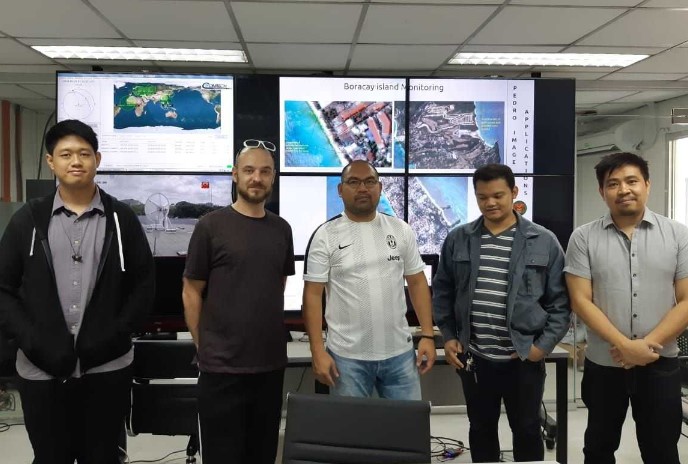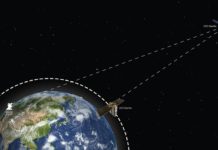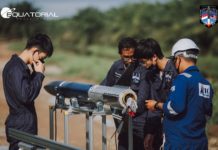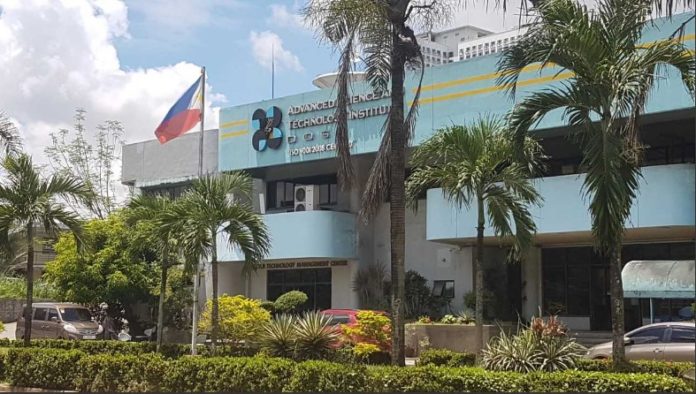
Last week we wrote about how CubeSats from Philippines, Bhutan and Malaysia were launched to the ISS on the Falcon 9 CRS-15 mission, as part of the BIRDS-2 project. This is a venture hosted by Kyushu Institute of Technology intended at giving partnering countries access to CubeSat technology, and technology transfer.
MAYA-1 was the BIRDS-2 CubeSat developed with the Philippines, and we were lucky enough to get invited to the ground station in Quezon City, Manila, coincidentally, on the day of the launch. You can see the video of the launch and the reaction of the staff at ASTI and University of Philippines Diliman at this link.
The Filipino satellite program falls under the auspices of DOST (Department of Science and Technology), and in particular the ground segment is controlled by the Advanced Science and Technology Institute (ASTI) in Quezon City, where they are able to track a number of satellites, both homegrown and foreign. In addition DOST-ASTI is where the batch commands are uploaded to control the satellites in orbit.
Currently there is one satellite operating in orbit, the microsat Diwata-1, with the MAYA-1 CubeSat waiting to be deployed from the ISS. When Diwata-2 is launched later this year, all of the operations will be controlled from this small but fully functional control centre.
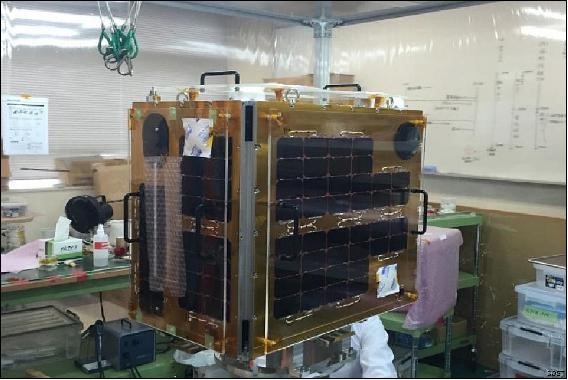
The DOST-ASTI campus
The ASTI is located in a beautiful plot with tropical trees and grass covering the area. Walking into the main building and the tropical vibe is even more present, with a large open quadrangle area with more lush greenery situated in the middle, letting natural light into the inner offices.
The main satellite control room is fully equipped with multiple computers for monitoring the status of the various satellites. There is a large display front and centre of the room where the satellite positions can be monitored on a huge map. Fans of orbital dynamics may be interested to know that ASTI opts for a modified version of CesiumJS for monitoring the real time position of space assets. CesiumJS is an open source global mapping platform that is designed with support of a consortium headed by AGI, Bentley Systems and Rafael.
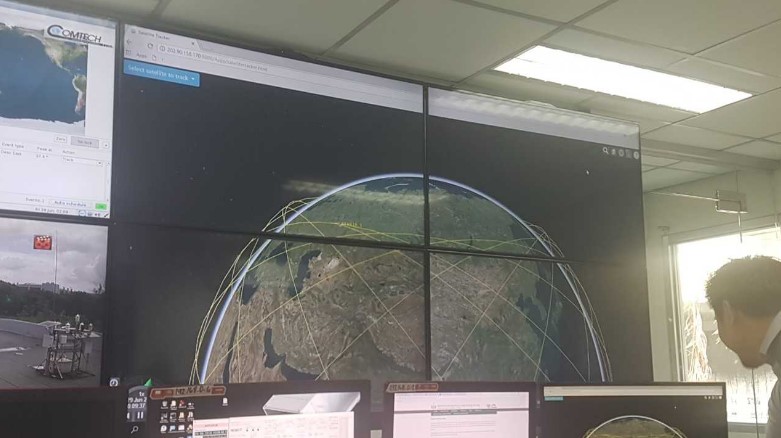
When asked why they preferred CesiumJS over other platforms such as AGI STK, we were told that CesiumJS is more than sufficient for the purpose of monitoring satellites. AGI STK has evolved somewhat since its origins as a satellite asset tracker and orbital position simulator to include other land, air and sea-based assets such as trucks, drones and ships — there simply isn’t the need for all of these other features at ASTI.
Next, we were shown some images from the various space assets, and how they have been used to monitor various events in the Philippines.
Monitoring the ground
First up, we were shown how the various space assets have been used to monitor the cleanup activities on Boracay, which was closed down earlier this year by President Rodrigo Duterte. The island has become fairly polluted over recent years with the number of tourists visiting.
The satellite images show the area over the last few months indeed getting cleaner, but ASTI and other scientists have noticed a stange phenomenon in the last few months. Algal bloom has appeared along the Boracay coastline…and nobody is sure why. ASTI GRS Mission Operations Head, Harold Bryan S. Paler suggests that the algal bloom may be the result of fresh sewage flowing into the water. But asides from that, from space at least, the cleanup does appear to be working.
Next we were shown images of Marawi City, which was recently held under siege by militants. Here, ASTI have made use of other foreign space assets to survey the land, as they have higher revisit times and higher special resolutions.
The information from these satellites can be used to assess damage in areas such as this, and can assist with reconstruction efforts.
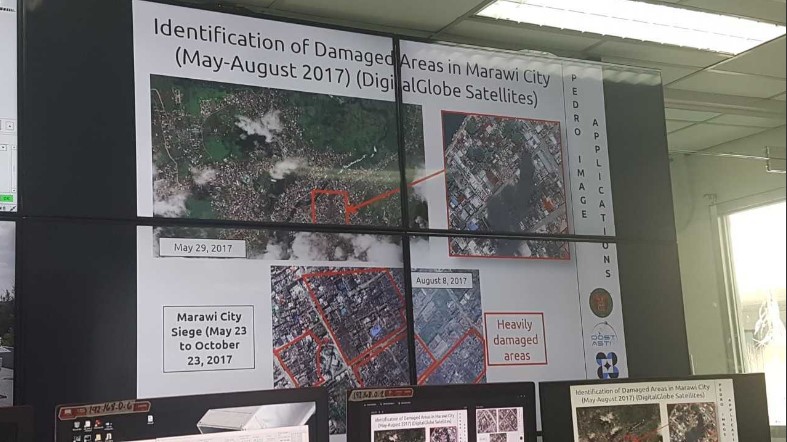
Of course, to see the bigger picture it is necessary not to only rely on space-based assets, but ground assets as well. One other project at ASTI has combined space-based observation with data-collection on the ground to help with ground-truthing, and to build a more holistic view of the situation.
One such example of this hybrid-data approach is the monitoring of water levels in areas affected by typhoons (of which there are many).
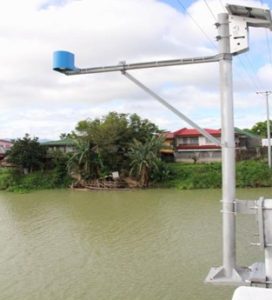
This project is named Emergency Distribution of Hydrometeorological Devices in Hard-Hit
Areas in the Philippines (HYDROMET) and uses a combination of space imagery and ground based water sensors strategically located on bridges to accurately monitor water levels during typhoons.
For this project to be fully realised, ASTI have designed two types of sensor stations named as ARG (automated rain gauge) and WLMS (water level monitoring station).
So now we’ve seen how ASTI are doing things on the ground, let’s take a look at their development program as a whole.
PHL Microsat Program
The bulk of Filipino space efforts are currently focused on the PHL Microsat program, which is intended to launch two hyperspectral microsats (Diwata-1 and Diwata-2) for Earth observation, covering topics such as local planning, climatology, disaster risk mitigation, and resource management. The project is run as a collaboration between DOST, Hokkaido University and Tohoku University.
The PHL Microsat Program is split into 5 phases, or projects.
- Project 1 is the development of the microsats, Diwata-1 and Diwata-2.
- Project 2 is focused on developing the ground receiving station.
- Project 3 is aimed at data processing, archiving and distribution subsystem development.
- Project 4 is dedicated to calibration and validation of remote sensing instruments.
- Project 5 is tasked with the development of remote sensing data products.
DIWATA-1
Diwata-1 Payload
– High Precision Telescope (HPT)
– Multispectral Imager with LCTF (MSI)
– Wide Field CCD Camera, Panchromatic (WFC)
– Middle Field CCD Camera, Color (MFC)
The first Filipino microsat was launched on an Atlas V to the ISS on 23rd March 2016 from Cape Canaveral.
It was deployed into orbit from the Japanese JEM Small Satellite Orbital Deployer (J-SSOD) onboard JAXA’s Kibo module on the ISS on April 27, 2016. You can see the deployment video here.
DIWATA-2
Diwata-2 is based on the same bus design as Diwata-1, and contains many of the same instruments as Diwata-1, but with the addition of an amateur radio unit (ARU) which is designed to encourage interest in amateur radio and satellite technology in the Philippines.
Diwata-2 Payload
– High Precision Telescope (HPT)
– Spaceborne Multispectral Imager (SMI) with Liquid Crystal Tunable Filter (LCTF)
– Wide Field Camera (WFC)
– Middle Field Camera (MFC)
– Enhanced Resolution Camera (ERC)
– Amateur Radio Unit (ARU)
Diwata-2 will be launched in a different manner as well. While the first microsat was deployed from the ISS, Diwata-2 will be deployed directly from the rocket and into a Sun-synchronous orbit, meaning that Diwata-2 will have a longer orbital lifespan than its predecessor.
Final thoughts
We have seen how various space assets are being utilized by the staff at ASTI. For a relatively young satellite program, ASTI is already reaping the rewards of its space assets. This goes to show the importance of satellite programs not just for government agencies, for educational institutes too. And the joint collaboration between the Japanese universities goes to show the benefits of technology transfer between nations. Clearly, only though proper cooperation in space can we all reap the benefits – both up there and especially down here.
Many thanks to Harold and the staff at ASTI for taking the time to show us around. Mabuhay!
